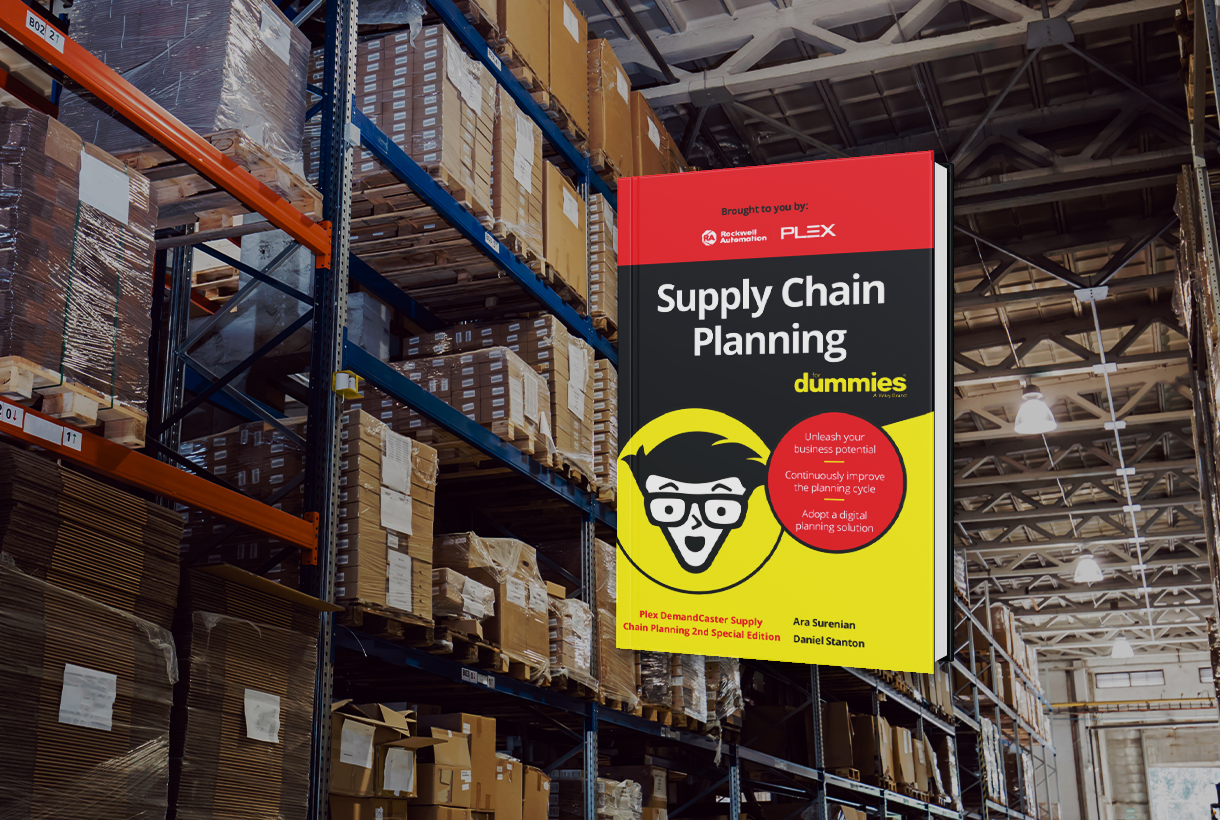
You may have seen the videos of tons of potatoes being thrown into landfills during the rise of COVID-19 in the United States. As expected, the reaction from the public was one of shock at the size of waste, sadness for the affected farmers, and worry for the food and beverage industry. Other commentators asked questions about sharing to dispossessed societies but the most important story was the one behind the scrapping of tons of potatoes. This story is one that highlights how fluctuating demand can negatively alter the food and beverages industry supply chains.
In this case, a pandemic led to the instant fluctuation and disruption to both global and regional supply chains. But such fluctuations are not always caused by pandemics. The food and beverage industry is famously known for its unique challenges which include raw ingredients perishability, volatile commodity pricing, and changing consumer demands. In some situations, a social media post can trigger a reduction in customer demand while striking workers in the transportation sector can disrupt supply chains.
This post will examine what an agile demand management process means to food and beverage manufacturers. It will also look at how demand forecasting and supply chain planning software can help you achieve a more flexible planning process. By the end, you’ll have a sense of the capabilities of a demand management system and what it means for your manufacturing operations.
The Need for Accurate Demand Forecasting
Demand forecasting refers to the aggregating and processing of historical sales data to develop forecasts of expected customer demand within specific time frames. Accurate demand forecasting includes integrating constraints that can affect demand into the equation. This agile method of demand forecasting puts the manufacturer in a position to react to market forces in real-time.
Accurate demand forecasting is a pivotal factor for food and beverage manufacturers as it enables the production of the required quantity of an item at the scheduled time. It is critical to advanced planning, supply chain planning, and inventory management as it provides the data needed to create master production schedules. Thus, with knowledge of customer demand, manufacturers can determine the number of ingredients to meet demand.
Accuracy also drastically reduces the uncertainties that come with planning for the future. This gives manufacturers the confidence to produce for tomorrow without undue worry about ingredient scrapping, food waste, or items remaining on shelves until they expire. The butterfly effect of demand management affects operations on the shop floor by helping manufacturers increase their service-levels.
One example is the use of demand forecasts in food and beverage facilities with multiple products. Knowledge of the varying demands for each product simplifies the process of allocating both ingredients and machine resources for the production of these items. This ensures the manufacturer is able to meet both long-term and urgent orders with ease and in a manner that keep diverse customers satisfied.
The finite shelf-life of the ingredients used within the industry means any wrong calculations lead to overstocking or stockouts. Overstocking means the inevitable scrapping of ingredients expected to expire within a defined time. While a stockout situation leads to missing customer orders and reduced service levels, and possibly a reduction in the manufacturer’s customer base. To achieve the right balance, accurate demand management is required, and you can optimize your demand forecasting and management processes using the tips below.
5 Ways to Optimize Your Demand Management Process
To get demand management right, food and beverages manufacturers must first hack demand forecasting. In a transitional environment, the use of conventional demand management tools such as Excel sheets and paperwork no longer works. They lack the ability to incorporate constraining factors and manage human error when manipulating physical data.
If you struggle with demand forecasting, here are some tips you can deploy to optimize your forecasting processes:
- Embrace Digitization – Spending hours rummaging through old record books is no longer a sustainable solution to gathering and categorizing historical sales data. The use of digital technology to capture sales data provides you with a solution that can process large data sets with ease. Digital solutions make long-term demand forecasting possible and provide the option to develop forecasts for specific seasons.
- Take Advantage of Best-in-Class Software – Embracing digitization opens the door to the hundreds of supply chain planning, demand forecasting, and management software. This is an opportunity to break down departmental silos and unite the business. Every department becomes involved with supply chain planning software and puts everyone on the same page for a production cycle. This is because planning software provides the tools needed for sales and operations planning. The volumetric and strategic data produced can then be integrated into or synchronizing with scheduling platforms. Thus, providing sales teams, operators on the plant floor, and decision-makers with the synchronized plans needed to optimize the organization’s operations.
- Integrate Benchmark Data – In situations where paper records have been destroyed or a manufacturer plans to bring a new product-to-market for the first time, benchmark industry data can help with demand management. Benchmark data refers to data from manufacturers offering similar services such as yours. With this industry-wide data, you can optimize both your demand management planning and production processes to better compete in the market.
- Evaluate Current Demand Forecasting Methods and Tools – Successful demand management involves continuously trying to improve what is obtainable at the moment. Thus, food and beverage manufacturers must constantly be on the lookout for new methods and tools with the ability to improve available demand forecasting processes.
- Appoint a Demand Forecast Champion – Although intelligent supply chain planning software can help meet demand forecasting needs, it is still a tool that needs the right team to interpret and implement the plans. There may be a single champion or a small team of champions chosen to lead process improvement and negotiate with the diverse teams across the organization that use the data from the software.
Supply Chain Planning Software and Optimizing Demand Management
Supply chain planning software is a solution that meets four out of the five tips shared above for optimizing your demand forecasting and management processes. Supply chain planning software provides food and beverage manufacturers the ability to lead a digital transformation.
Industry-grade software provides benchmark statistics you can take advantage of to forecast customer demand. The stated feature, scalable storage spaces, and supportive applications for advanced planning are some important features that make supply chain planning software a versatile solution for manufacturers looking to optimize demand management. Other benefits of integrating supply chain planning software in manufacturing operations in the food and beverage industry include:
- Cash flow Optimization – The ability to make accurate demand forecasts ensures you do not purchase excess inventory which frees up working capital. Purchasing excess inventory leads to increased storage expenditure and in the case of the food and beverage industry ingredient scrapping.
- Supply and Logistics Flexibility – Knowledge of future demand and constraints surrounding traditional supply chains enable manufacturers to diversify their supply chains in ways that mitigate the effect of expected constraints on their ability to receive ingredients.
- Ease of Access – Overstocking leads to a packed storage facility making it difficult for order pickers to access items on an inventory list. With a properly curated inventory, locating and loading material handling equipment with ingredients becomes an easier proposition.
The 5 Important Features of a Best-in-Class Supply Chain Planning and Demand Forecasting Software
To reap the benefits that come with optimizing supply chain planning and demand forecasting, food and beverage manufacturers must make use of software that meets their specific needs. This software must be capable of handling both today’s challenges and future challenges as a business grows to help with capacity planning. When considering your software options, here are the important features to consider:
- Extensible Utilization – The ability to accurately forecast demand ties into capacity planning which also requires exceptional inventory management to succeed. This means supply chain planning software must be capable of handling inventory management, demand forecasting, sales and operations planning, and capacity planning activities within its interface. If this isn’t achievable, manufacturers end up purchasing multiple software solutions to manage these interconnected processes that optimize production cycles.
- Enhanced Visualization – The ability to visualize processed data in an easily understood format is important if data is to be shared across every department within the organization. Although the process of data analysis is technical in nature, the results must be easily accessed and understood by both technical and non-technical individuals. This is where information visualization comes into the picture. A best-in-class supply chain planning software must intuitively provide information in formats everyone from the sales department to operators on the shop floor can understand.
- Cloud compatibility – For subject matter experts interested in planning for future growth, planning software that leverage the cloud is required to manage increasing workflows. Cloud-based supply chain planning software ensures you can scale up your computing resources requirements by simply increasing your subscription rate without having to make any major changes or data transfers.
- Support Existing Applications – Manufacturers who have already digitized certain processes such as human resources management or enterprise resources planning require supply chain planning software that can integrate the data these applications provide. Agile supply chain planning software complements the efforts of these applications to enhance collaboration and communication initiatives within the facility.
- Ease of Use – Although demand forecasting requires the analysis of large data sets to make accurate predictions, an excellent planning tool is expected to be intuitive enough to simplify the analytical task. Thus, an excellent supply chain planning software should come with supportive tools that ensure analytical teams do not have to struggle with data every production cycle.
The use of planning software has helped and continues to help manufacturers increase revenue generation by 20 to 50%. Learn more about overcoming the challenges you face with demand forecasting and managing your supply chains by downloading the Delivering Flexible Supply Chains in the Food and Beverage Industry ebook.

